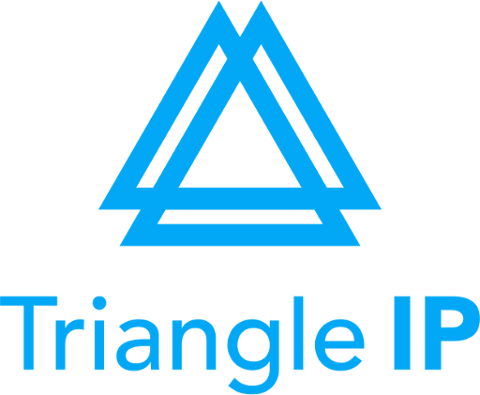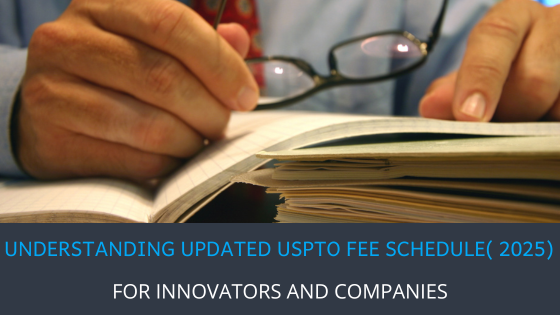| TL; DR: The USPTO’s 2025 fee changes quietly raised the cost of doing IP. From surcharges on late continuations and excess claims to new volume-based IDS fees, every stage of patenting is now more expensive. This article breaks down key updates and offers practical filing strategies to help innovation managers stay compliant, reduce costs, and maintain a lean, high-impact patent portfolio. |
Updated USPTO Fee Schedule (2025): What Inventors and Companies Need to Know
The USPTO’s 2025 fee schedule didn’t make front-page news, but it’s already shifting how innovation managers think about filings, forecasts, and IP budgets. Across industries, teams are discovering that what used to be a standard patent filing is now a potential cost center, especially if it includes excess claims, delayed continuations, or large volumes of prior art.
These aren’t surface-level updates. They affect how you time filings, what your legal team flags during product reviews, and how closely your budget aligns with your IP strategy across quarters.
If you manage a growing portfolio or work closely with legal counsel on innovation protection, these changes matter. This article walks you through the key fee updates, what they mean in practical terms, and how to adapt your filing strategy to stay on track both financially and competitively.
Key Changes to the USPTO Fee Schedule in 2025
Nearly every USPTO fee category, be it application, examination, maintenance, or petition, saw revisions in 2025. This section outlines the most notable changes across patents and trademarks so you can plan filings and budgets accordingly.
Patent Fee Increases (Effective January 19, 2025)
Here are some notable changes in patent fees.
Significant Price Jump in Design Patents
Design application costs rose by around 48%. The basic filing fee increased from $220 to $300. The search fee doubled from $160 to $300, and the examination fee moved from $640 to $700. The design issue fee now sits at $1,300—up from $740. These new rates apply to large entities, with proportional increases for small and micro entities.
Utility Patent Fees Climbed Modestly
The utility patent search fee rose from $700 to $770, and the examination fee increased from $800 to $880. The issue fee went from $1,200 to $1,290. Overall, these represent a 5–10% increase across the board.
Excess Claim Fees Got Steeper
If your application includes more than 20 total claims or more than three independent claims, expect higher charges. The per-claim surcharge doubled from $100 to $200 for total claims and from $480 to $600 for each extra independent claim. Multiple dependent claim fees also increased from $860 to $925.
RCEs Became More Expensive
A Request for Continued Examination (RCE) now costs $1,500 for the first request, up from $1,360. If you need a second or later RCE, the fee jumps to $2,860—a 43% increase. While a proposed third-tier RCE fee was considered, it wasn’t implemented.
New Continuation Surcharges Were Introduced
If you file a continuation or divisional application 6 years or more after the earliest priority date, there’s a new $2,700 surcharge. If filed after 9 years, that surcharge increases to $4,000. These fees are entirely new and are intended to discourage late continuations.
Information Disclosure Statements (IDS) Now Have Volume-Based Fees
Applicants now face tiered fees based on the number of references in an IDS. If you cite more than 50 documents, a $200 fee applies. If that number exceeds 100, the total fee rises to $500. Over 200 references? You’ll pay $800. These cumulative charges are new as of 2025.
Patent Term Extension (PTE) Costs Went Up
The application fee for a PTE more than doubled, from $1,180 to $2,500. Interim extension requests also rose: initial requests jumped from $440 to $1,320, and subsequent ones from $230 to $680. A brand-new fee of $1,440 was introduced for supplemental redeterminations.
Maintenance Fees Increased Slightly
Renewal fees payable at 3.5, 7.5, and 11.5 years saw a 7–8% hike. The new fees are $2,150, $4,040, and $8,280, respectively. The late payment surcharge also increased from $500 to $540.
Late Maintenance Petitions Were Restructured
Previously, reviving a lapsed patent due to non-payment of maintenance fees required a flat $2,100 fee. That’s now split into two tiers: $2,260 if the delay is two years or less and $3,000 if it’s longer.
Other Fee Adjustments to Note
The non-DOCX surcharge (for not using the preferred document format) increased slightly from $400 to $430. Extension of time fees for Office actions also increased. For example, a one-month extension now costs $235, while a five-month extension is $3,395. The Track One (priority examination) fee increased from $4,200 to $4,515.
April 2025 Update: Expedited Design Examination Fee Removed
One final update came in April 2025. The USPTO officially suspended the “rocket docket” program for expedited design patent examination. As a result, the corresponding fee, previously $1,600 for large entities, was removed from the fee schedule. Applicants can no longer fast-track the design examination via this method.
Patent Filing Strategies After the 2025 USPTO Fee Schedule Changes
With the USPTO’s 2025 fee schedule introducing new surcharges and raising existing costs, it’s become more important than ever to approach patent filings with intention. Whether you’re a solo innovator or managing a corporate IP portfolio, small shifts in how you file can lead to major savings over time.
Here’s a practical guide to help you adapt. ( Note: the TIP ToolTM can give you huge leverage here.)
Consider Limiting Your Claim Count Early
When drafting your patent application, it’s a good idea to stay within three independent claims and twenty total claims. The USPTO now charges significantly more for any claims beyond those limits. Every extra independent claim increases your costs noticeably, and the same goes for the total claim count.
For individual inventors, keeping things lean helps lower filing costs upfront. For enterprises managing multiple applications, a disciplined approach to claims can save thousands. A concise claim set also makes the examination more straightforward, which means fewer complications down the line.
Focus Your IDS on What Matters Most
It’s worth reviewing your Information Disclosure Statement (IDS) to ensure it includes only the most relevant prior art. Under the new fee structure, you’ll be charged if you list more than 50 references in an IDS, with escalating fees at 100 and 200 references. These charges apply per application and can’t be reduced through entity status. By eliminating duplicate references or non-essential citations, you can avoid these new fees. If you’re managing multiple related filings, be aware that examiners already have access to references cited in parent cases. For startups and enterprises alike, keeping the IDS tight is a small move with a big financial impact.
Try to Reduce the Number of Examination Rounds
If you can resolve issues with the examiner early in the process, you’ll likely save time and money.
Requests for Continued Examination (RCEs) have become significantly more expensive. The first one is pricier than before, and each additional RCE costs even more. To avoid needing them, make your responses to Office actions as thorough as possible.
Consider requesting examiner interviews to clarify points directly. Fewer rounds of back-and-forth not only cut costs but also often lead to faster outcomes.
Here is how the TIP ToolTM helps:
Firstly, the TIP Tool™ features an Art Unit Predictor. Its job is to anticipate which USPTO art unit might handle your application by analyzing your draft claims. Because some art units have lower allowance rates and longer prosecution timelines, knowing this in advance allows your attorney to refine claim language strategically, which can reduce the required number of RCEs.
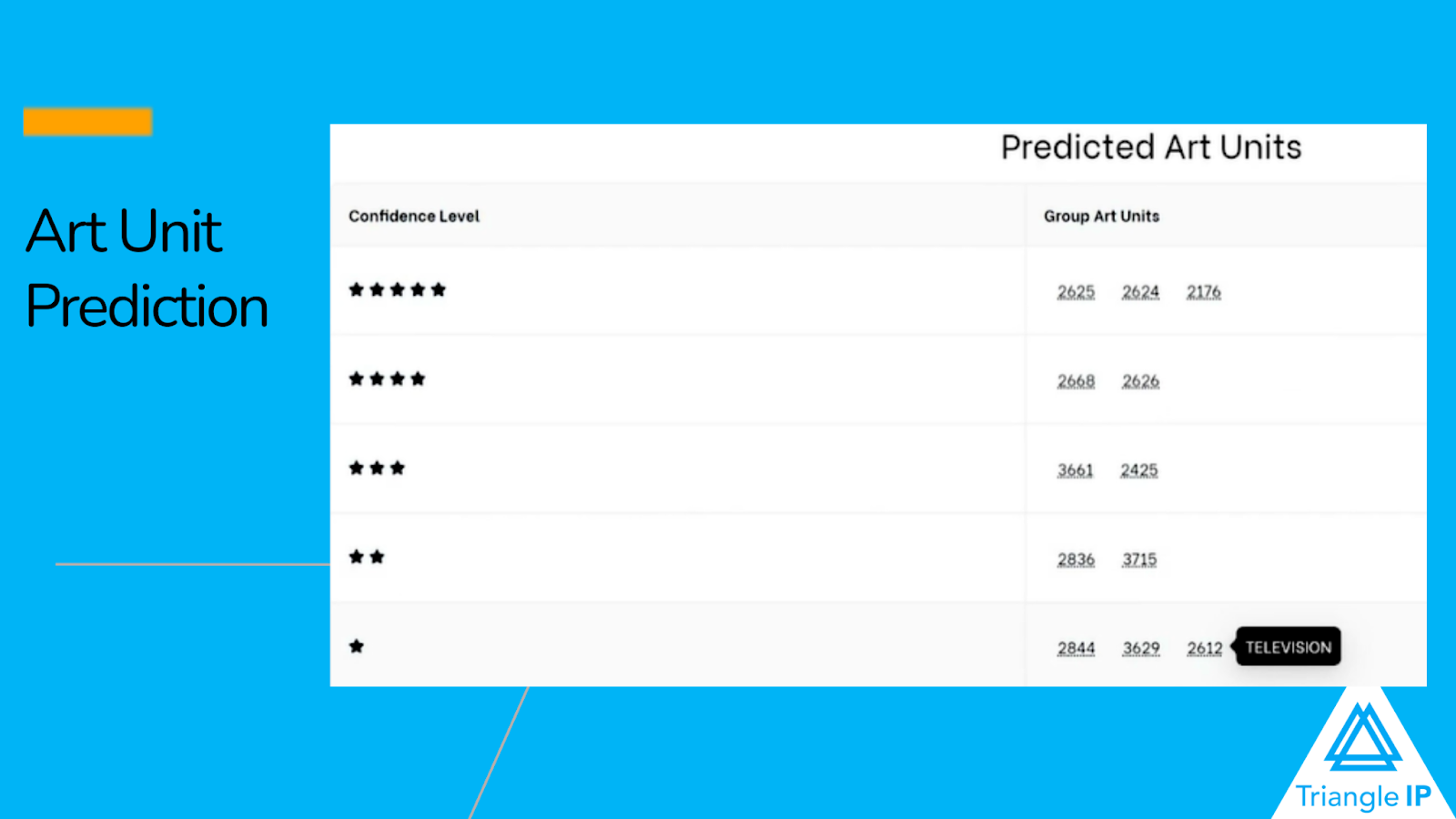
Secondly, the TIP Tool™ includes an “Examiner Analysis” feature that gives you access to detailed historical data about your assigned examiner, such as approval rates, average time to grant, and known tendencies.
This intelligence helps your legal team adjust prosecution strategies based on the right expectations and the history of patents that got approval from that examiner. This realignment improves your chances of a faster and more favorable outcome.
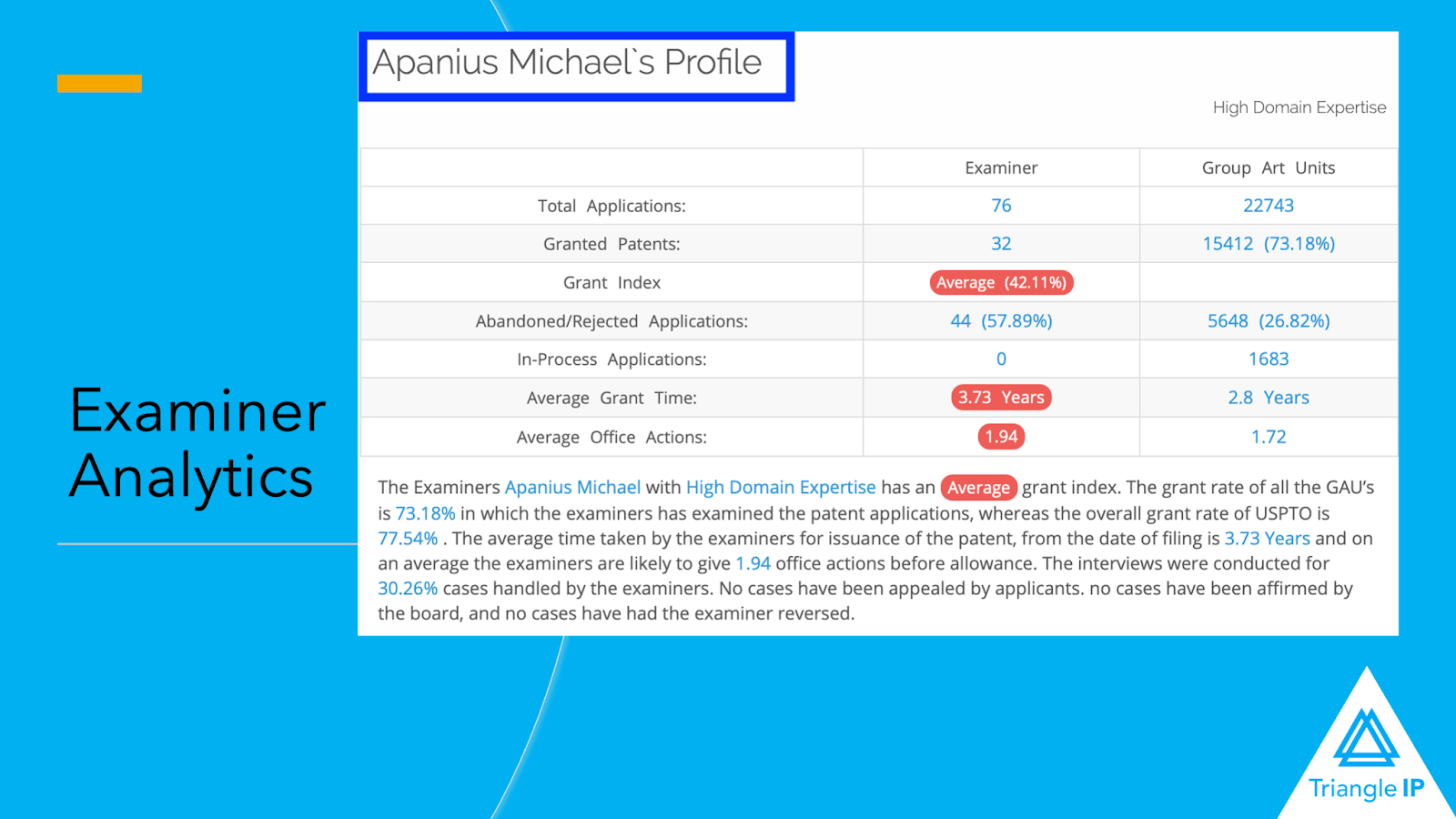
Last but not least, on the Portfolio Manager Graph, you can see the overview of your current patents, which includes the number of argument rounds. If you notice one or a few of your patents are taking way too many rounds than anticipated, you can take quick action and consult your legal counsel.
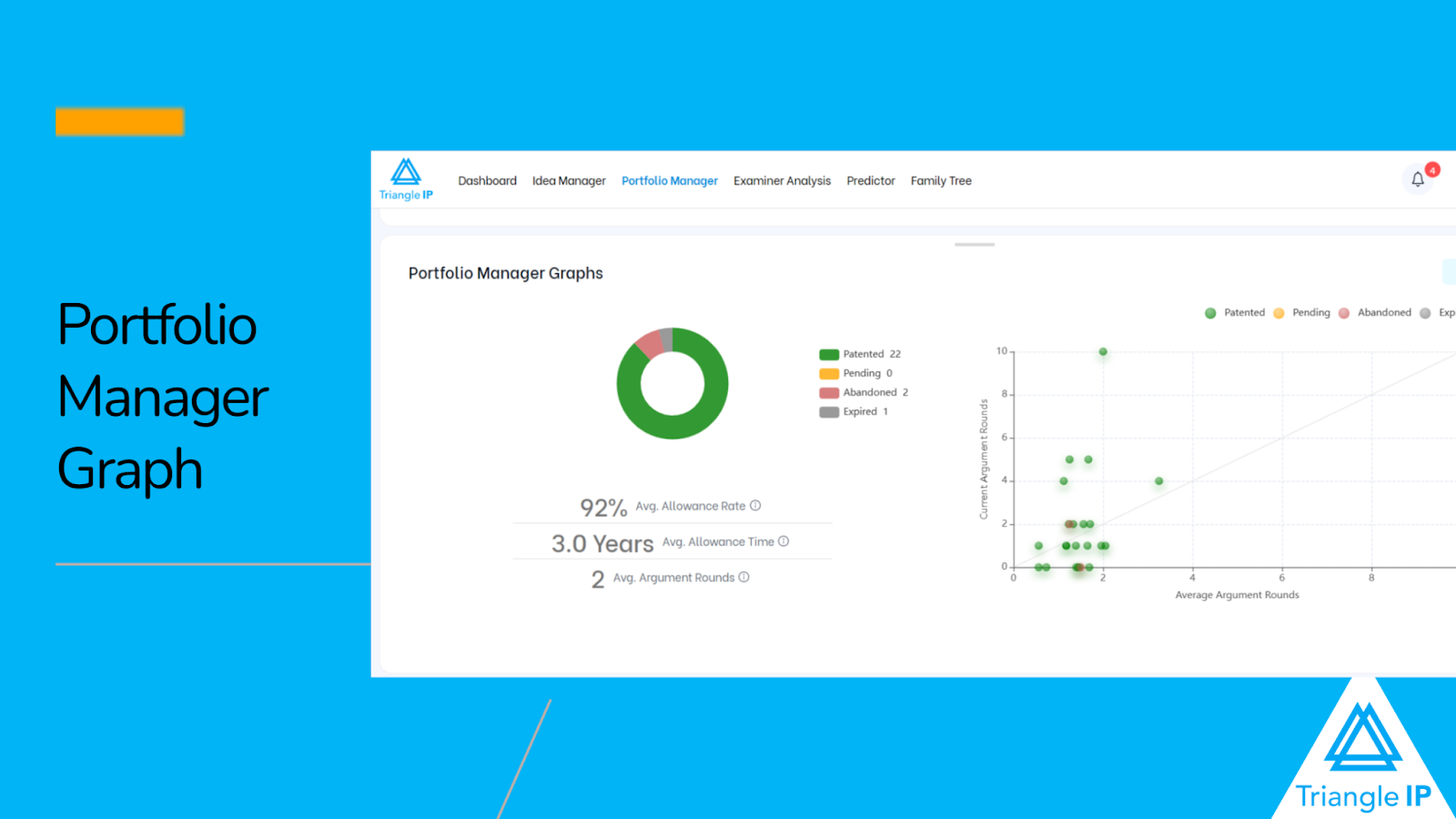
Don’t Wait Too Long To File Continuations
If you’re planning to file a continuation, divisional, or continuation-in-part (CIP), consider doing so within six years of the original application date. The USPTO will now apply a large surcharge if these filings happen later in the life of the patent family. After nine years, the fee increases again.
While solo inventors may not often face this situation, enterprising managers of complex or long-running portfolios must closely monitor those timelines. You want to review older patent families so you can act before fees escalate unnecessarily.
This is where the Triangle IP’s Patent Family Tree Generator can assist. You can view the patent family tree of a selected patent from the “Portfolio Manager” tab. This family tree helps visualize when to file continuations and how much protection your patent portfolio currently offers. You can use both the Gnatt view and the classic view for a better understanding.
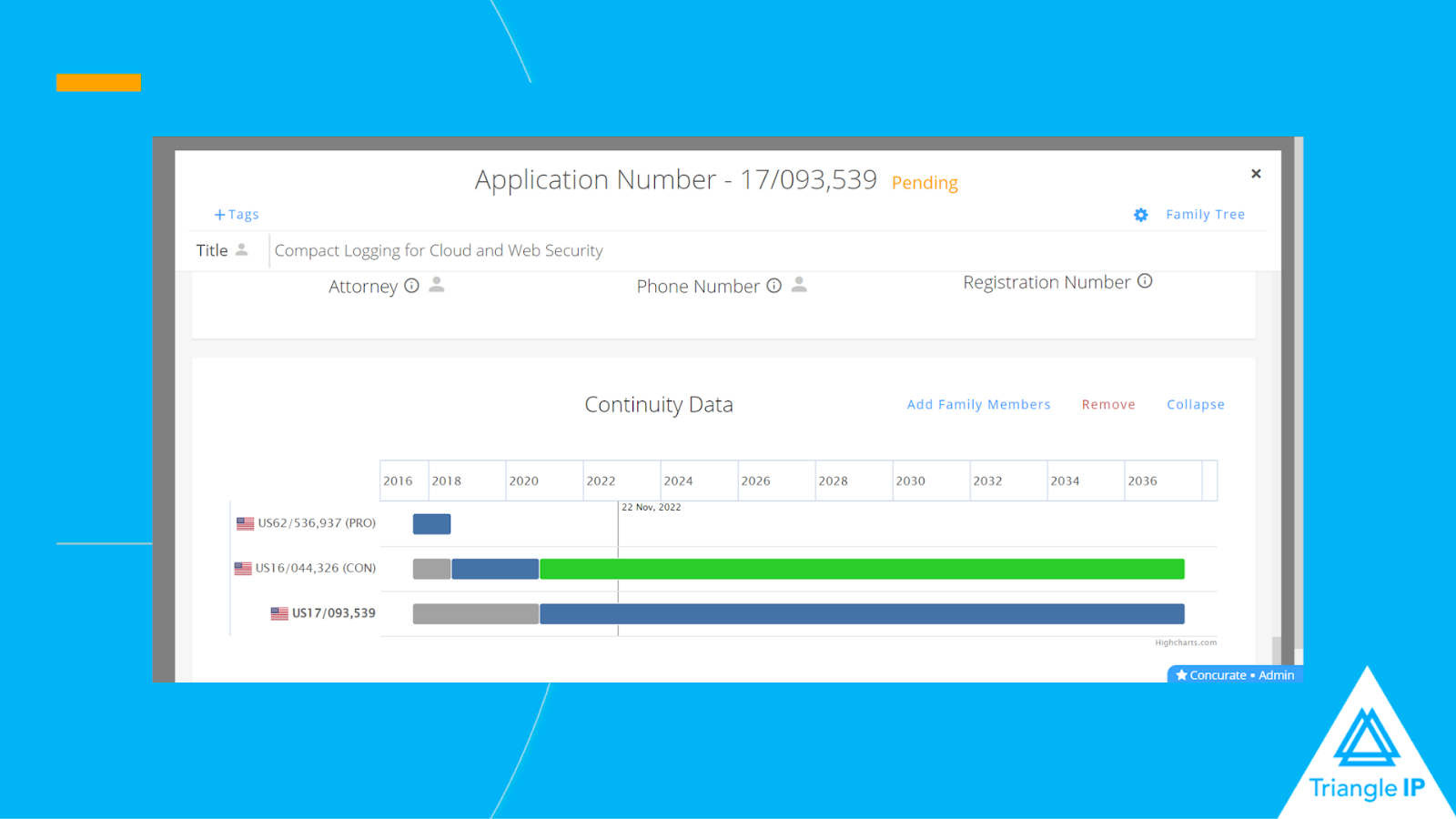
Re-Evaluate Your Patents Before Paying Maintenance Fees
As your patents approach the 3.5, 7.5, and 11.5-year marks, it helps to reassess their value. Maintenance fees have gone up at each stage, and there are also higher penalties for late payments.
For patents no longer tied to key products, technologies, or licensing deals, it might not make sense to keep paying. Letting non-core patents lapse can free up the budget for higher-impact filings. And you need to do this on a regular basis.
In Thomas Franklin’s (patent attorney and founder of TrinagleIP) words,
“Think about the cost associated with it to continue the process and the value. Maybe the likelihood that value might change if it’s very early in the process, but if you can do that on a regular basis, you are going to get the most return for your spending. “
This is especially helpful for startups working within tight IP budgets and for enterprises aiming to maintain a focused, high-value portfolio.
Note: Thomas has shared two valuable tips on how much to spend on low-value patents. Feel free to give it a watch.
The TIP ToolTM can make this low-value patent pruning process convenient. It provides a detailed breakdown of the accurate estimated lifetime costs of all your patents and saves you from manually going through documents to get the right price-value standing of each patent.
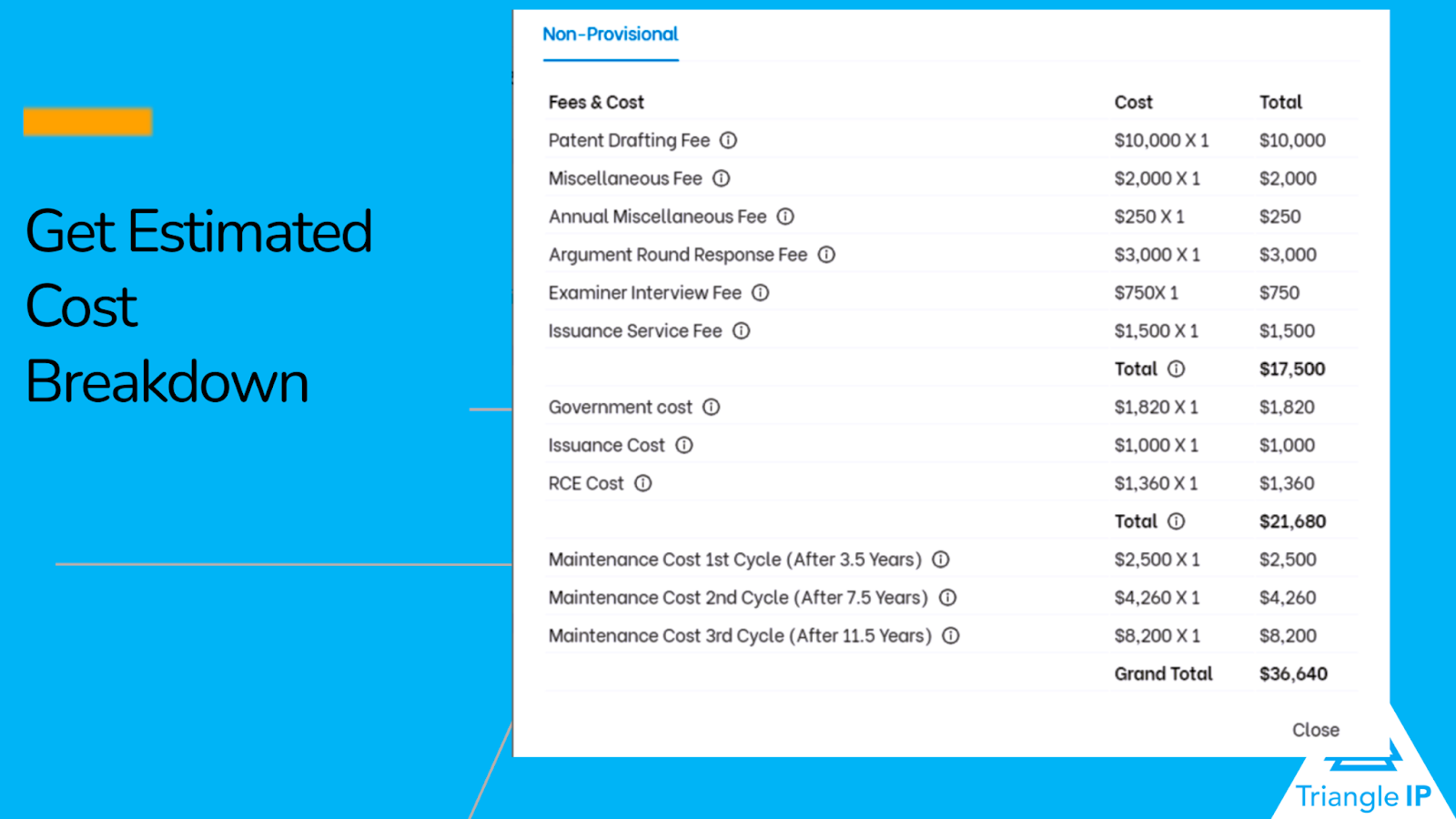
File Electronically, and Don’t Miss Your Deadlines
It’s worth using the USPTO’s electronic filing system and submitting in the DOCX format whenever possible. The non-DOCX surcharge and the fee for paper filings both add to your overall cost. Late responses to Office actions or missed fee payments come with their own penalties.
These are easy to avoid with some planning. For individuals, calendar reminders can help keep things on track. For enterprises, using IP management tools like TriangleIP or working closely with outside counsel ensures that everything stays organized. Filing correctly and on time is one of the simplest ways to reduce unnecessary expenses.
The TIP ToolTM Makes Your Patent Cost Minimization Easier
More often than not, patent prosecution and maintenance costs expand because of a lack of visibility. For instance, you keep paying for a patent that has lost its value over time, or you get slapped with more office actions just because you fail to prepare and respond within the deadline.
The TIP ToolTM fixes that by giving you complete 360-degree visibility across the entire patent lifecycle, from ideation to patent maintenance.
- Its idea capture form makes it super easy to fill your innovation idea pipeline.
- During the ideation phase, this tool can give a detailed view of critical matters, such as the projected cost of securing a patent and the chances of getting a patent on any idea. It pushes you to pursue very practical ideas right from the start.
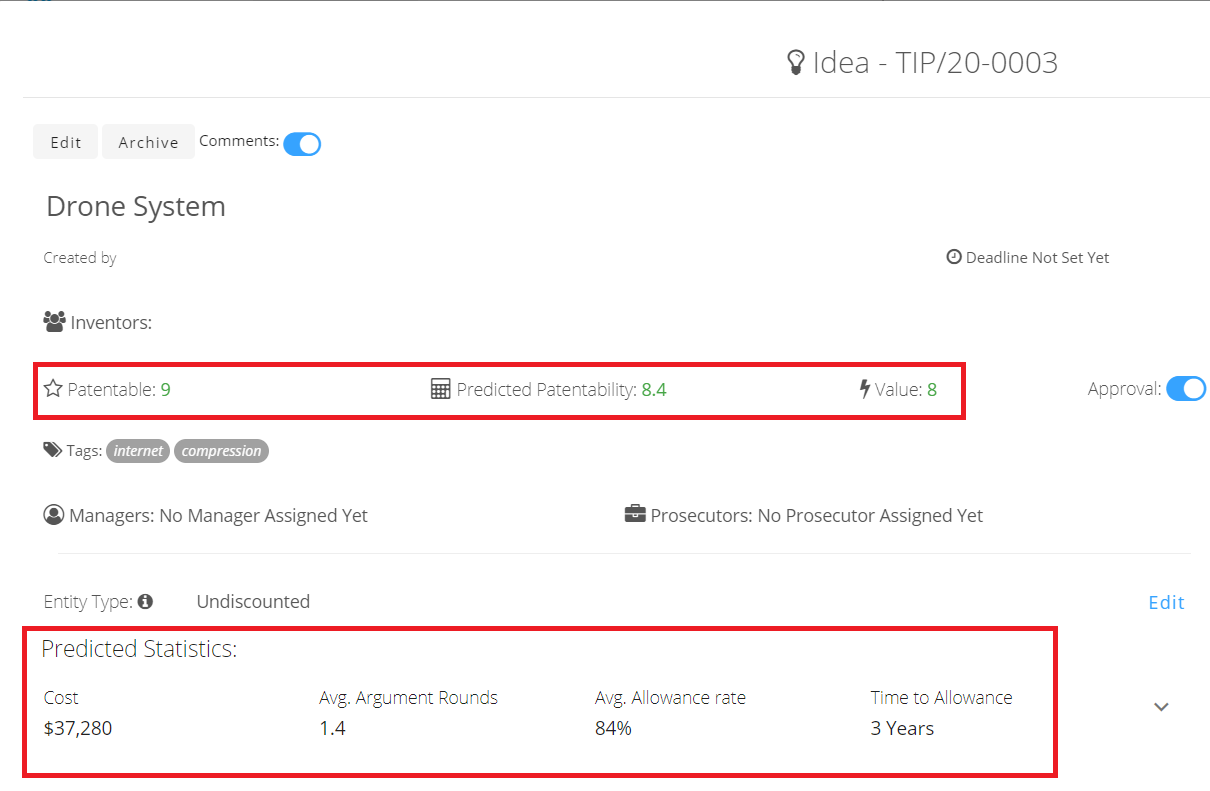
- Once you are ready to file, features like Art Unit Predictor and Examiner Analysis help you steer your strategy for maximum chances of success.
- Portfolio Manager presents a comprehensive view of your patent portfolio.
- Then you have features like the Patent Family Tree generator that come in handy to assess your portfolio strength and what to pursue to maintain control.
- The Estimated Cost Breakdown feature keeps you informed about total lifetime costs and future costs.
Long story short, with such clarity, you can make decisions faster, protect yourself legally, and get the most out of your patent budget.
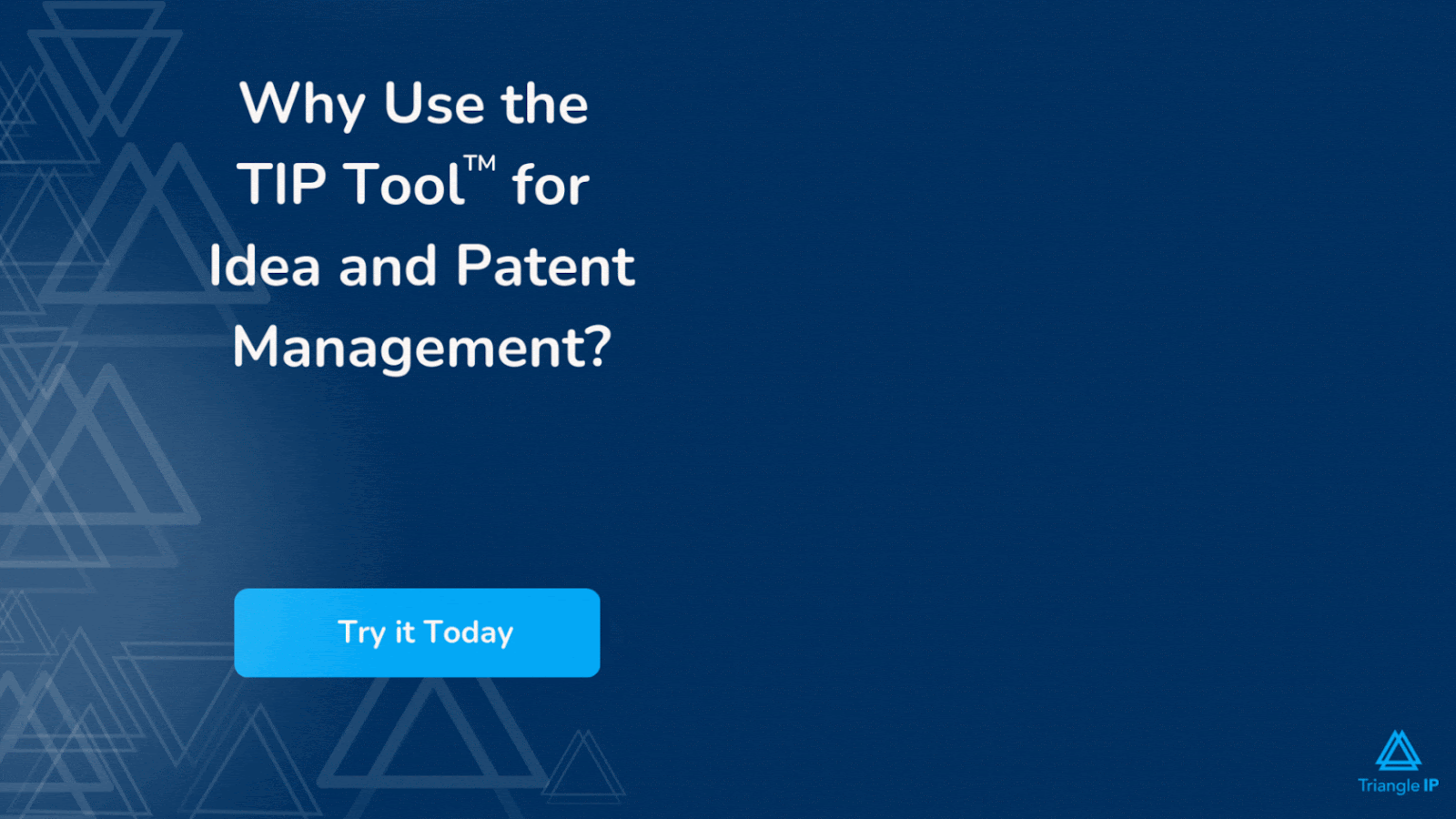
If all sounds good to you, feel free to sign up here.
FAQs
1. How Do I Determine if I Qualify for Small or Micro Entity Status for Fee Reductions?
To qualify for reduced fees, you must meet specific income and ownership criteria set by the USPTO. For small entities, this includes having fewer than 500 employees. Micro entities must also meet income limits and not have filed more than four patents. The USPTO requires official certification to claim these statuses.
2. Are USPTO fees Refundable if I Withdraw or Abandon My Application?
Generally, most USPTO fees are non-refundable, even if you withdraw or abandon your application later. However, some limited exceptions exist, such as overpayments or certain petition denials. Applicants should review the fee details carefully before submitting payment.
Triangle IP founder, Thomas, has an in-depth discussion on when and why to abandon some of the patents you are pursuing. Feel free to give it a watch.
3. What’s the Difference Between “Statutory Fees” and “Non-statutory Fees” on the USPTO Schedule?
Statutory fees are set by law and apply broadly (like filing or issue fees), while non-statutory fees cover specific services (like late filings, petitions, or extensions) and are set by the USPTO. Understanding the distinction helps applicants anticipate possible additional charges beyond base costs.
